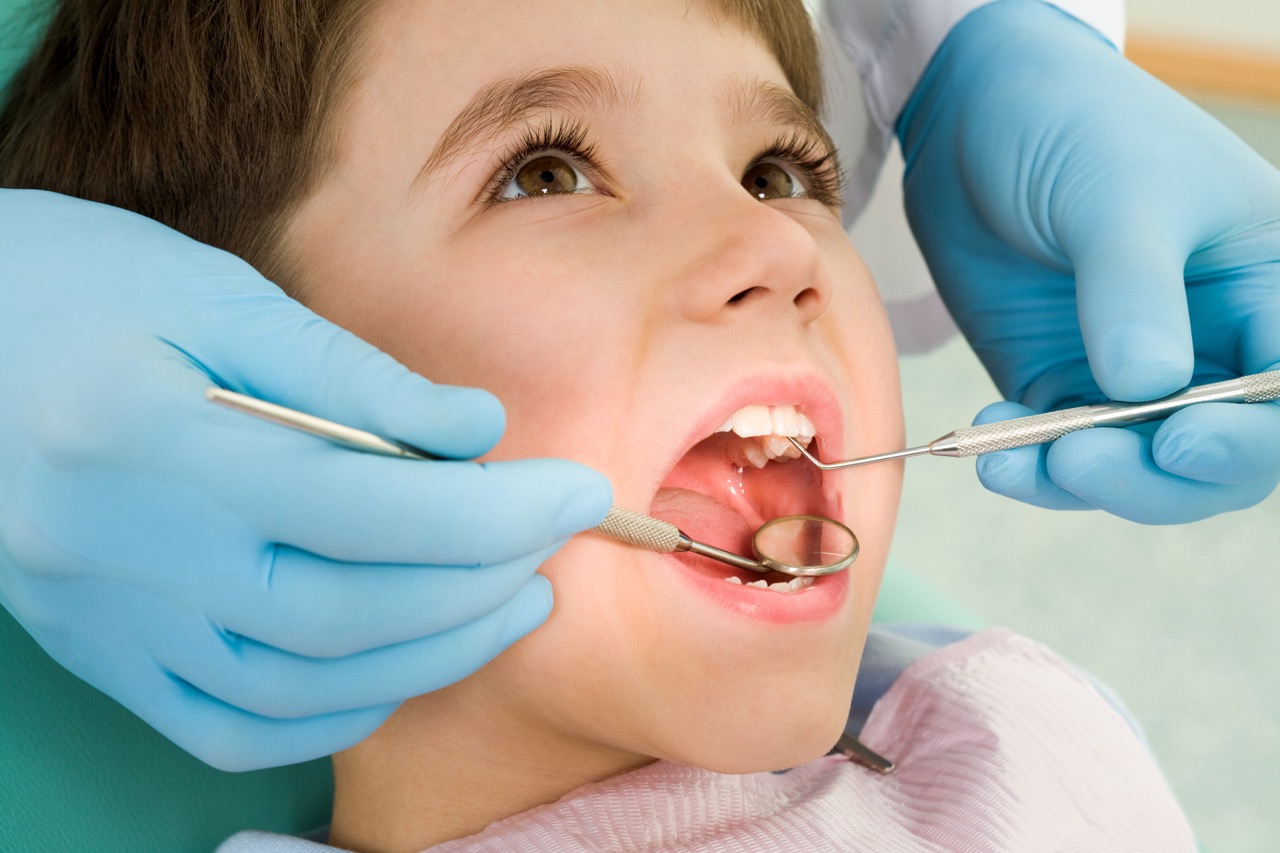Cavities, also known as tooth decay, are small holes in your teeth caused by the breakdown of enamel – the hard outer layer of your pearly whites. Plaque is a sticky film composed of bacteria that regularly appear on our teeth and produces acids when we eat or drink foods containing sugar. The acidity corrodes the enamel gradually over time if left unchecked and can lead to cavities for people from all age groups alike – children, teens, and adults included!
How can you recognize tooth decay in a child?
While tooth decay tends to present itself similarly in most cases, the severity and progression of it can vary from child to child. Below is a general overview of how teeth typically develop cavities and other forms of decay:
- White spots
- Sensitivity in the tooth’s enamel to hot and cold drinks or food
- Light to Dark brown color cavities
- Pain or swelling in the tooth area
How to treat cavities in children?
In most cases, treatment requires removing the decayed part of the tooth and replacing it with a filling. Fillings are materials placed in teeth to repair damage caused by tooth decay. They are also called restorations.
What is the process of dental filling?
After administering a local anesthetic to numb the area, the pediatric dentist will use a drill to eliminate all traces of decay from your child’s tooth. The cavity is then meticulously cleaned and filled with a tooth-colored material in multiple layers that are hardened by special light curing equipment. Lastly, the underlying structure and filling will be carved into its desired shape for optimal comfort and aesthetics.
Do Baby Teeth Run the Risk of Getting Cavities?
“Bottle rot”, also known as “baby bottle tooth decay”, is a common issue among infants and toddlers that can lead to early dental issues. This form of decay primarily happens when babies are permitted to suck on bottles filled with anything other than water at night time – be it milk, juice, syrup, etc. The sugars in these beverages accumulate around their teeth which then eventually leads them to start rotting away.
To protect your little one’s teeth from decay, never let them sleep with a bottle of anything other than water. Additionally, refrain from dipping pacifiers in sugary substances such as honey or syrup. Limiting juice soda consumption is also crucial to maintain low sugar consumption for babies and toddlers. Finally, begin brushing your baby’s teeth as soon as the first one emerges.
Is it Necessary to Treat Cavities in Baby Teeth?
Yes, baby teeth are just as susceptible to cavities and decay as adult teeth. As such, it is important for parents to take the necessary steps to prevent cavities from forming in their child’s mouths. Additionally, even though baby teeth will eventually fall out on their own, a cavity in a baby tooth should still be treated with a filling. This is because, if left untreated, the decay can spread to other teeth, or even worse – cause an infection in the tooth’s pulp. Not only will this cause severe pain for your child but it could also lead to more serious complications such as abscesses and loss of surrounding teeth and bone structure.
How to prevent tooth decay?
For optimal dental health, have your children (and yourself) practice the following habits:
- Brush twice a day with fluoride toothpaste
- Clean between your teeth daily using floss or an interdental cleaner
- Maintain a nutritious and balanced diet while limiting snacking
- Inquire about supplemental fluoride from your dentist as it strengthens teeth against decay
- Consider dental sealants for the protection of chewing surfaces on back teeth where cavities often start first
- Visit your dentist regularly for professional cleaning and oral examination
What is the difference between sealants and fillings?
Fillings and sealants are two dental treatments used to maintain healthy teeth, but it’s important to remember that fillings focus on restoring the tooth from existing damage while sealants work as a preventative measure. A filling is applied when decay has already compromised the integrity of your child’s enamel, whereas a sealant acts as an invisible barrier between your child and future cavities by covering vulnerable areas.
What to take away from this
As a parent, it is your responsibility to ensure that your children’s teeth remain healthy. By following the simple steps above such as brushing twice daily with fluoridated toothpaste and limiting sugary snacks, you can help protect them against cavities. Additionally, sealants are an effective way of preventing future decay from occurring in vulnerable areas while fillings work well for repairing existing damage caused by tooth decay. Taking these preventive measures will ensure that your child’s smile stays bright and beautiful for years to come!





